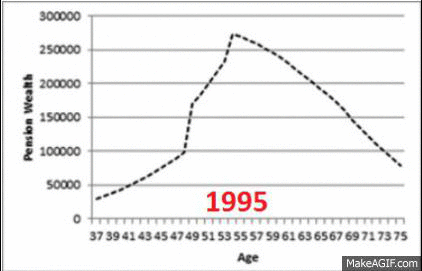In the late 1990s, state pension funds experienced surpluses from high returns in the stock market. Rather than prudently saving the surplus funds, many states passed legislation to enhance or increase pension benefits for public workers.
In a recent paper, economists Cory Koedel, Shawn Ni, and Michael Podgursky analyzed who benefitted from a series of pension enhancements in Missouri in the late 1990s and early 2000s and by how much. As the authors calculate, teachers who were already well into their teaching career received benefit increases of over $100,000 in estimated pension wealth. However, to pay for the benefit enhancements and a falling stock market, Missouri has been forced to increase teacher contributions to the pension plan. That contribution increase was not enough to cancel out the benefit increase for late-career teachers, but it erased all gains for teachers who were early in their career at the time. Most importantly, because both employees and their employers were now paying higher contribution rates, it made the overall compensation structure much worse for all new teachers. That system still exists today.
You should read the full paper, but to show the effect of the benefit enhancements for mid- and late-career teachers I created the gif below from the authors' Figure 1. It shows the changes in pension wealth for someone who began teaching in Missouri schools at the age of 25 in 1983. Her benefits improved substantially as a result of pension formula enhancements in 1996, 1999, 2000, and 2002, creating a much more generous benefit at the back end of her career. The dotted line in all the graphs is the baseline year of 1995.
Chart: Missouri Pension Wealth Accrual Before and After Benefit Enhancements, 1995-2002

Source: Figure 1 here.